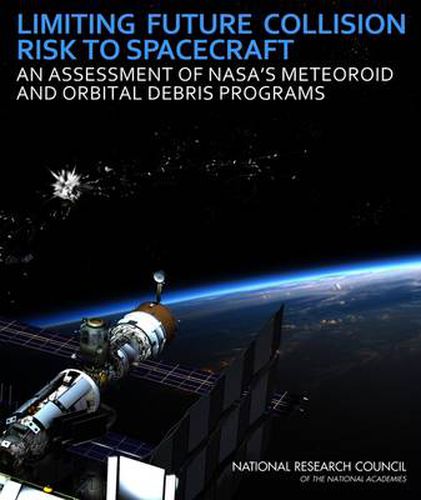Readings Newsletter
Become a Readings Member to make your shopping experience even easier.
Sign in or sign up for free!
You’re not far away from qualifying for FREE standard shipping within Australia
You’ve qualified for FREE standard shipping within Australia
The cart is loading…






Derelict satellites, equipment and other debris orbiting Earth (aka space junk) have been accumulating for many decades and could damage or even possibly destroy satellites and human spacecraft if they collide. During the past 50 years, various National Aeronautics and Space Administration (NASA) communities have contributed significantly to maturing meteoroid and orbital debris (MMOD) programs to their current state. Satellites have been redesigned to protect critical components from MMOD damage by moving critical components from exterior surfaces to deep inside a satellite’s structure. Orbits are monitored and altered to minimize the risk of collision with tracked orbital debris. MMOD shielding added to the International Space Station (ISS) protects critical components and astronauts from potentially catastrophic damage that might result from smaller, untracked debris and meteoroid impacts. Limiting Future Collision Risk to Spacecraft: An Assessment of NASA’s Meteoroid and Orbital Debris Program examines NASA’s efforts to understand the meteoroid and orbital debris environment, identifies what NASA is and is not doing to mitigate the risks posed by this threat, and makes recommendations as to how they can improve their programs. While the report identified many positive aspects of NASA’s MMOD programs and efforts including responsible use of resources, it recommends that the agency develop a formal strategic plan that provides the basis for prioritizing the allocation of funds and effort over various MMOD program needs. Other necessary steps include improvements in long-term modeling, better measurements, more regular updates of the debris environmental models, and other actions to better characterize the long-term evolution of the debris environment.
$9.00 standard shipping within Australia
FREE standard shipping within Australia for orders over $100.00
Express & International shipping calculated at checkout
Derelict satellites, equipment and other debris orbiting Earth (aka space junk) have been accumulating for many decades and could damage or even possibly destroy satellites and human spacecraft if they collide. During the past 50 years, various National Aeronautics and Space Administration (NASA) communities have contributed significantly to maturing meteoroid and orbital debris (MMOD) programs to their current state. Satellites have been redesigned to protect critical components from MMOD damage by moving critical components from exterior surfaces to deep inside a satellite’s structure. Orbits are monitored and altered to minimize the risk of collision with tracked orbital debris. MMOD shielding added to the International Space Station (ISS) protects critical components and astronauts from potentially catastrophic damage that might result from smaller, untracked debris and meteoroid impacts. Limiting Future Collision Risk to Spacecraft: An Assessment of NASA’s Meteoroid and Orbital Debris Program examines NASA’s efforts to understand the meteoroid and orbital debris environment, identifies what NASA is and is not doing to mitigate the risks posed by this threat, and makes recommendations as to how they can improve their programs. While the report identified many positive aspects of NASA’s MMOD programs and efforts including responsible use of resources, it recommends that the agency develop a formal strategic plan that provides the basis for prioritizing the allocation of funds and effort over various MMOD program needs. Other necessary steps include improvements in long-term modeling, better measurements, more regular updates of the debris environmental models, and other actions to better characterize the long-term evolution of the debris environment.